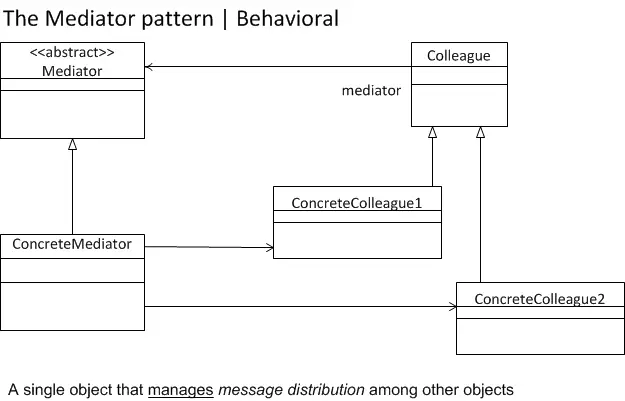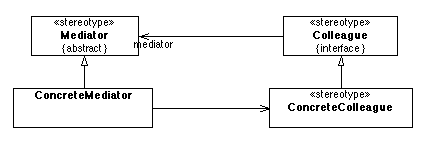The Mediator Pattern: The Grand Conductor of the Software Symphony
In the grand theater of Behavioral Patterns, a collection of entities bustle, each with its own purpose, rhythm, and tempo. Objects communicate, share responsibilities, and occasionally, step on each other's toes. Amidst this orchestra of interactions, enters the Mediator Pattern, not as a mere participant, but as the poised conductor, directing the ensemble with grace and finesse.
- Setting the Stage:
Picture a bustling grand ball, with dancers moving elegantly, trying not to collide. But what if there was a maestro in the center, guiding each dancer's step, ensuring harmony? This a description of our Mediator pattern, which prevents chaos and imposes order. - The Essence of the Maestro | The Mediator:
The Mediator Pattern is about reducing connections between multiple classes or objects by centralizing external communications. Rather than objects speaking to each other directly (and risking a cacophony), they converse through the mediator. This ensures a more decoupled system, where changes in one object don’t cause a ripple effect. - Deciphering the Notes:
- Mediator Interface: This sets the tone. It defines how the Mediator communicates with the ensemble, our various components.
- Concrete Mediator: Here’s our maestro, wielding the baton. It embodies the Mediator Interface, understanding how to orchestrate the interplay between individual components.
- Colleagues: Think of these as the instrumental sections of our orchestra: strings, woodwinds, percussion. They don’t interact directly, instead, they rely on the mediator to relay their melodies and ensure harmony.
- The Crescendo of Benefits:
- Simplified Communication: By funneling interactions through the mediator, we sidestep the pitfalls of objects getting too chatty with each other.
- Enhanced Decoupling: By ensuring components don't interact directly, we can easily swap out or alter one without reconfiguring the entire ensemble.
- Clarity in Conduct: With a central figure guiding interactions, it's easier to manage and modify the flow of communication.
- The Potential for Discord:
Like any maestro who tries to manage a vast orchestra, the Mediator risks becoming overly complex. If our Mediator is burdened with too many interactions, it can become a monolith, hard to maintain and understand. - A Dance Through Modern Systems:
In today's software realms, especially in GUI development or complex systems where multiple components interact, the Mediator strikes a chord. It helps in isolating how components converse, ensuring that a tweak in one widget doesn’t throw the entire system off-beat.
Mediator Pattern Description
The Mediator pattern simplifies communication among objects in a system by introducing a single object that manages message distribution among other objects.
The Mediator pattern promotes loose coupling by keeping objects from referring to each other explicitly, and it lets you vary their interaction independently. The diagram below illustrates the Mediator pattern.

Benefits of the Mediator Pattern
The following lists the benefits of using the Mediator pattern:
- Decouples colleagues
- Simplifies object protocols
- Centralizes Control
- The individual components become simpler and easier to deal with, because they no longer need to directly pass messages to each other
- Components are more generic, because they no longer need to contain logic to deal with their communication with other components.
When to Use the Mediator Pattern:
You should use the Mediator pattern when:
- A set of objects communicate in well-defined but complex ways.
- You want to customize a behavior that's distributed between several objects without using subclasses.
Mediator, ConcreteMediator, Colleague, and ConcreteColleague

Mediator Pattern Java Code